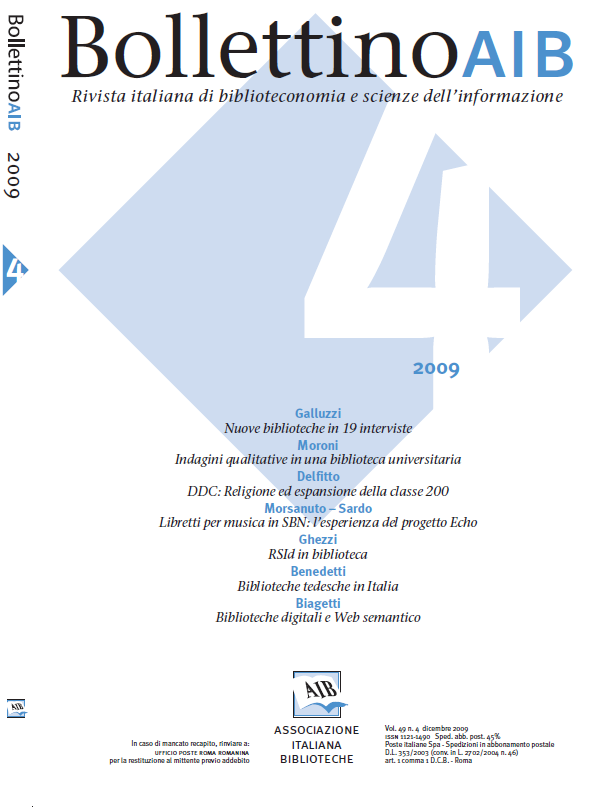Building new libraries or building a new way to be libraries? An Italian itinerary through 19 interviews
Main Article Content
Abstract
The last fifteen years have been marked by a great drive to build new libraries throughout the Western world - and not only there. Most of the new buildings are public libraries, but many university and other types of libraries have also been built, not to mention a move to refurbish historical buildings in order to guarantee larger spaces to already existing libraries or to newly established libraries. This tendency contributes to reassuring librarians on the fact that, in spite of the “convergence to digital” of information content and the virtualization of services, libraries continue to be considered essential for the harmonious development of a community and there is no risk of their disappearance or marginalization. There is probably some truth in this conviction. On the other hand, it should be emphasized that the majority of architectural interventions about libraries form part of more extensive urban plans; they are often the result of a lucky concurrence of national policies and local initiatives and of general social and urban policies rather than more strictly cultural actions. Basically, the enthusiasm to create new libraries that has occurred in recent years was not triggered by a renewed interest in libraries. It can be explained as an attempt by cities - large ones in particular, but also medium and small ones - to give new life to public spaces, in order to gain back those citizens that are more and more attracted by private spaces and shopping citadels. Italy is part of this process even if it is characterized by some peculiarities that often lead Italian librarians to consider useless the analysis of international case studies for better understanding the future of Italian libraries. This is why this article aims at describing the Italian experience through the voice of its own protagonists. In autumn 2008, about thirty Italian librarians (and some scholars) - involved in various ways in creating new libraries or new buildings for the existing ones - were contacted to be interviewed on these issues and on the projects in which they had personally participated. Nineteen of those accepted to be interviewed and offered an interesting, even if rather biased, overview of the Italian viewpoint on this subject. The interviews were aimed, on the one hand, at finding out more about some aspects of the projects, and, on the other, at shedding light on new categories of users, relationships with the city and its way of life, role of the directors and relations with other libraries of different types.
Article Details
Section
Articles

This work is licensed under a Creative Commons Attribution-ShareAlike 4.0 International License.
